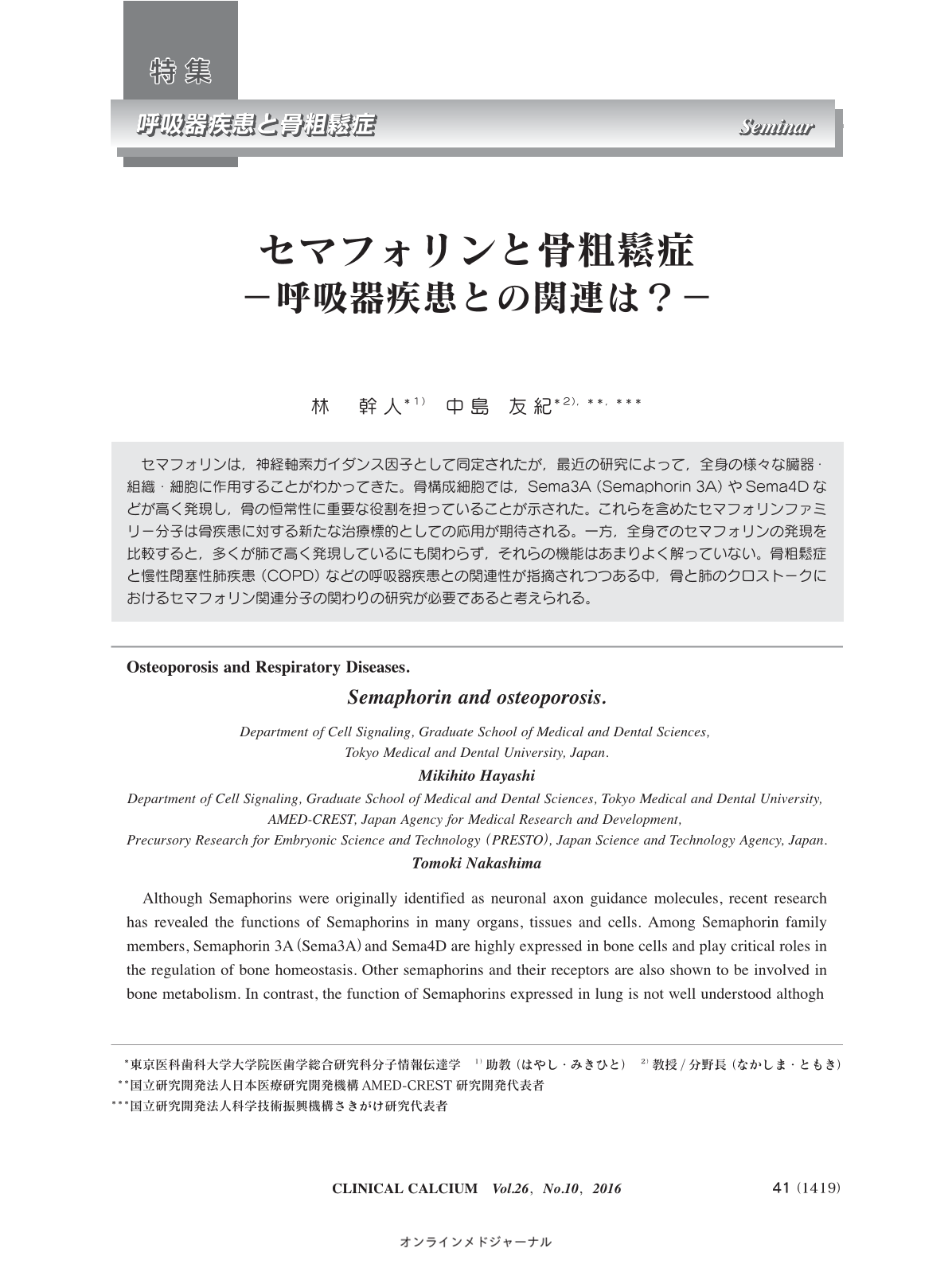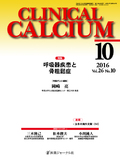Japanese
English
- 有料閲覧
- Abstract 文献概要
- 1ページ目 Look Inside
- 参考文献 Reference
セマフォリンは,神経軸索ガイダンス因子として同定されたが,最近の研究によって,全身の様々な臓器・組織・細胞に作用することがわかってきた。骨構成細胞では,Sema3A(Semaphorin 3A)やSema4Dなどが高く発現し,骨の恒常性に重要な役割を担っていることが示された。これらを含めたセマフォリンファミリー分子は骨疾患に対する新たな治療標的としての応用が期待される。一方,全身でのセマフォリンの発現を比較すると,多くが肺で高く発現しているにも関わらず,それらの機能はあまりよく解っていない。骨粗鬆症と慢性閉塞性肺疾患(COPD)などの呼吸器疾患との関連性が指摘されつつある中,骨と肺のクロストークにおけるセマフォリン関連分子の関わりの研究が必要であると考えられる。
Although Semaphorins were originally identified as neuronal axon guidance molecules, recent research has revealed the functions of Semaphorins in many organs, tissues and cells. Among Semaphorin family members, Semaphorin 3A(Sema3A)and Sema4D are highly expressed in bone cells and play critical roles in the regulation of bone homeostasis. Other semaphorins and their receptors are also shown to be involved in bone metabolism. In contrast, the function of Semaphorins expressed in lung is not well understood althogh many of Semaphorins are highly expressed in lung among various tissues examined. As growing evidence reveals that the link between chronic obstructive pulmonary disease(COPD)and osteoporosis, the crosstalk between bone and lung through Semaphorin signaling should be investigated.



